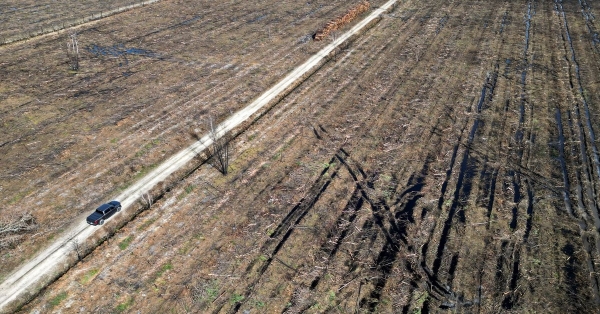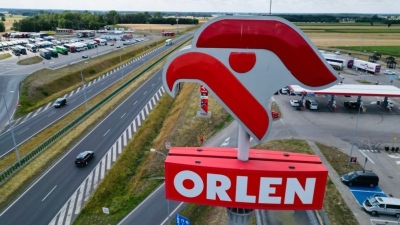A scorched southwestern France braces itself for fires to come

From the Gironde region south of Bordeaux, columns of white smoke rise from the forest floor. Brown coal, which is found in the peaty soil of the region, is what is causing the smell of burning tires.
Guillaume Carnir (France’s National Forest Agency) said that the fire has been burning since mid July. "We don’t know how to stop it at this point."
Hostens’ blaze is a remnant from massive wildfires that devastated southern Europe last year. This was after the worst drought in history was exacerbated by successive heatwaves, which scientists believe are consistent with climate change.
Gironde was especially hard hit, with over 20,000 hectares of forest lost. There is also the danger of new fires.
Carnir stated that "all the greenery will return in the spring, and which will be flammable," he said.
Pascale Got, an official local in charge of environment protection, stated that the fire at Hostens was constantly under surveillance by drones that measure heat levels.
She said that wildfire risk is best managed by prevention and swift intervention when it first starts. This is much easier from the top.
AdvertisementGot stated, "It is evident that we need an immediate answer from the government regarding air assets."
According to the interior ministry, measures for fighting forest fires in France will be presented within the next few weeks.
Unusually dry winters in parts of the European continent’s south have reduced soil moisture and raised concerns about a repeat of 2022 when 785,000 hectares of Europe were destroyed. This was more than twice the average annual loss for the last 16 years according to statistics from the European Commission (EC).
The government is now looking at ways to make forests and woods more resilient to climate changes. This includes better scrub clearing, more hardwood trees that burn more easily, and other measures to keep the area from becoming an inferno each year.
Failure to act can lead to collapsing soils and falling trees, and an endless cycle of uncontrollable fires which have not only destroyed natural habitats but also homes and businesses.
Authorities said that Friday’s Spanish first major wildfire caused more than 3,000 ha of destruction and forced 1,500 people to leave their homes.
LUNAR LANDSCAPE
The wildfires that destroyed Gironde’s Origne town for two weeks in July last year and forced its residents from their homes for nearly two weeks have been extinguished. Although firefighters were able to save every house except one, there are still scars.
"It’s not the village that I knew: there was woods, we were able to hike, it was beautiful," Bernard Morlot, 79, told Reuters that he had considered moving. It’s now the desert. It’s awful, it looks just like the moon.
Vincent Dedieu (46), couldn’t hide his sadness as he looked out at the vast empty land with piles upon piles of dead trees.
He said, "It will be at least 15 years before we get back to normal,"
Dedieu said that he felt helpless and abandoned by authorities after the disaster. "We must rebuild our roads, and our pathways," Dedieu stated. "It’s going be extraordinarily expensive, and so far we don’t have any."
Everyone agreed, from officials to woodworkers, that clearing paths and setting up firebreaks in forests is key to slowing down wildfires.
Pierre Berges (53), a Planfor private forest manager, stated, "The better the forest looks after, the less fire stays,"
Berges has been working for months to salvage what little he can from the forests destroyed by wildfires. Some wood, below the charred bark from burnt trees is still in good shape and Planfor has been converting it to lumber, timber, and fuel.
FOREST OF THE FUELD?
In terms of reforesting, the only way to save burned areas is to plant them next year. Experts suggest that the forest would be more resilient if it was planted with different varieties of trees.
Private parcels have the economic incentive to plant pine. Pine will quickly grow into marketable timber.
Carnir, an ONF agent, stated that the maritime pine is a leader in wood production and adaptation to the environment, which includes the extremes in drought and very draining soils.
He said, however, that this shouldn’t stop forest agents from bringing in diversity to help protect forests from parasites or fire spreading.
There has been a push to plant more hardwood trees like oak and birch in recent years. Jean-Marc Bonedeau from Planfor nursery told Reuters by phone that he has noticed a decline in "classic" forest variety orders, but not in quantity, but in proportion.
Bonedeau stated that 70% of our production was made from maritime pine four- or five years ago. Now it is only 45%.
Finding seeds can be difficult. Bonedeau stated that climate change can affect the tree’s ability bear fruit.
Share this article:



